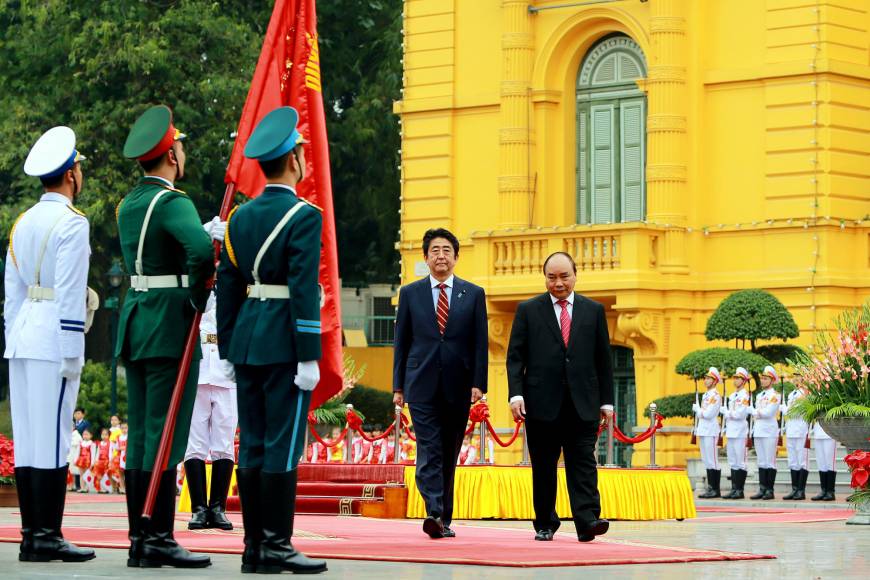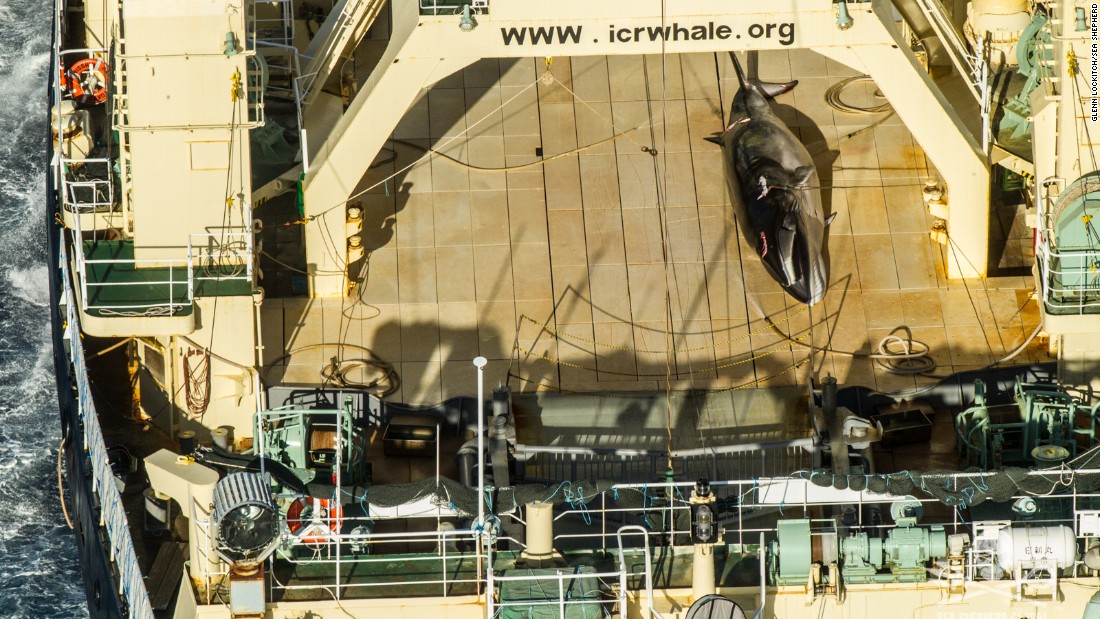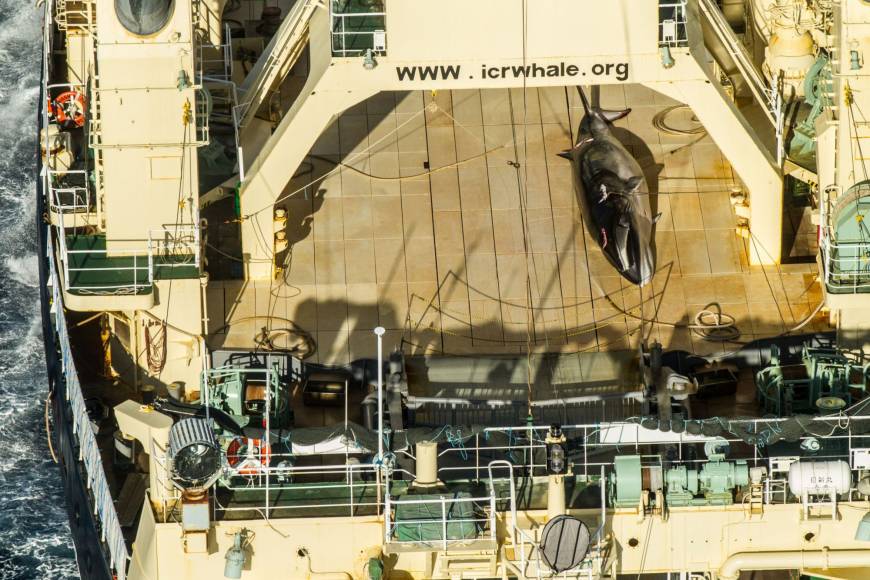 HANOI/BOGOR, INDONESIA – Prime Minister Shinzo Abe and his Vietnamese counterpart, Nguyen Xuan Phuc, met Monday in Hanoi to discuss a coordinated response to China’s increasingly aggressive maritime moves amid uncertainty about incoming U. S. leader Donald Trump’s commitment to the region’s stability.
HANOI/BOGOR, INDONESIA – Prime Minister Shinzo Abe and his Vietnamese counterpart, Nguyen Xuan Phuc, met Monday in Hanoi to discuss a coordinated response to China’s increasingly aggressive maritime moves amid uncertainty about incoming U. S. leader Donald Trump’s commitment to the region’s stability.
During the summit, Japan was to announce a fresh offer of patrol vessels to the Southeast Asian country, which is embroiled in a territorial row with China in the contested South China Sea, Japanese officials said.
The vessels would help strengthen Hanoi’s maritime law enforcement capabilities as tensions simmer with Beijing over the strategic waterway.
Although Japan is not a claimant in the South China Sea disputes that involve China, Vietnam and four other governments, it remains concerned about China’s growing military presence in the busy shipping lane and is keen to maintain a rules-based order at sea.
Tokyo meanwhile is involved in a dispute with Beijing over the Japanese-controlled Senkaku Islands in the East China Sea that are claimed by China.
Vietnam is Abe’s last stop on a four-nation tour that also took him to the Philippines, Australia and Indonesia, which — along with Vietnam — have been key Asia-Pacific nations that Abe has sought to strengthen ties with amid China’s rise and uncertainties over Trump’s Asia policies.
Amid concerns about a shift to a protectionist U. S. trade policy under Trump, the leaders were likely to discuss promoting free trade, including the U. S.-led Trans-Pacific Partnership and the Regional Comprehensive Economic Partnership, of which both countries are members, the officials said.
RCEP is an Asia-Pacific mega-pact that — unlike the TPP — excludes the United States but includes China.
The outlook for the TPP is dim as Trump, who takes office Friday, has vowed to reject the agreement in its current form.
Nguyen Xuan Phuc is holding out hope that Trump will reconsider the TPP, noting that recent comments by officials who are set to take senior roles in Trump’s Cabinet give him reason to be optimistic.
“Many of the newly appointed members of the new Cabinet are in favor of the TPP, so I think that Washington might reconsider its decision because it will also benefit the U. S.,” he said.
Phuc, 62, is working with other Asia-Pacific leaders to keep momentum going on the 12-nation trade treaty.
Vietnam, however, has yet to submit a proposal to ratify the TPP in its National Assembly.
In addition to strengthening security dialogue and defense cooperation, Abe was set to offer Japanese cooperation on infrastructure development in Vietnam, including a sewage system project and the development of the Hoa Lac high-tech park on the outskirts of Hanoi, the officials said.
Vietnam’s decision last year to withdraw contracts to build nuclear power reactors with Japanese assistance was a blow to the Abe government, which views the export of infrastructure as a pillar of his economic growth strategy.
On Sunday, Abe met Indonesian President Joko “Jokowi” Widodo, with the two agreeing to start discussions on a major railway project linking Jakarta and the nation’s second-biggest city.
Japan has historically been one of Indonesia’s biggest investors but was dealt a blow in 2015 when Jokowi’s government awarded China a high-speed train project that links Jakarta with the city of Bandung in West Java.
Tensions surrounding the railway deals appeared to have eased Sunday, when Abe said after meeting Jokowi in Bogor, south of Jakarta, that Japan will cooperate with Indonesia to build infrastructure in the railway and other sectors.
Abe also announced that Tokyo will provide Indonesia with yen loans worth ¥73.9 billion for irrigation and coastal protection projects.
In response, Jokowi said the two leaders had agreed to hold a “two-plus-two” meeting of their defense and foreign ministers in Jakarta by the end of the year.
The two leaders also discussed North Korea, with Abe saying its development of nuclear capability and missiles has reached “a new level of threat.”
North Korea said last week it can test launch an intercontinental ballistic missile at any time from any location set by leader Kim Jong Un, adding that the hostile U. S. policy was to blame for its arms development.
On the South China Sea, Abe stressed that Japan places a high level of importance on upholding the law and solving disputes peacefully.
“The issue of the South China Sea has drawn the attention of the international community and directly affects the peace in the region,” Abe said.
Maritime security cooperation is of the utmost importance for fellow maritime nations Japan and Indonesia, he added.
“Japan will actively encourage cooperation in maritime security and the development of the remote islands in Indonesia,” he said.
China claims almost the entire South China Sea, through which about $5 trillion worth of trade passes each year. Brunei, Malaysia, the Philippines, Taiwan and Vietnam also have claims to parts of the sea.
While Indonesia is not part of the dispute over claims in the South China Sea, it objects to China’s claim to waters around the Natuna Islands.
At an estimated cost of $5.5 billion, the Jakarta-Bandung rail line was seen in 2015 as a coup for China, which is vying for influence in the region under its “One Belt, One Road” policy and has ambitions to be a global train supplier.
The roughly 600-km Jakarta-Surabaya project is likely to cost less than the Jakarta-Bandung rail as the speed of the trains is slower and most of the land has been secured, according to Indonesia’s transport minister.
The transport minister said in October that his government had invited Japan to work on the Jakarta-Surabaya project, which is aimed at slashing journey times between the capital and the East Java city by more than half, to around five hours.
Japan and Indonesia also plan to develop the Masela gas block in Indonesia’s Maluku Province and Patimban port in West Java, Jokowi said Sunday.
On other regional issues, Abe said North Korea’s kidnapping of Japanese citizens is a very important challenge for his administration.
Pyongyang admitted in 2002 to kidnapping 13 Japanese citizens decades ago. Abe has made resolving the emotive issue a signature pledge of his political career.
© Source: http://www.japantimes.co.jp/news/2017/01/16/national/politics-diplomacy/abe-jokowi-unite-south-china-sea-disputes-plan-two-plus-two-meeting/
All rights are reserved and belongs to a source media.
 The Japanese car parts maker Takata has agreed to pay US$1bn in penalties in the US for concealing dangerous defects in its exploding airbags. The firm, which also has assembly plants in Brazil and Uruguay, also pleaded guilty to a single criminal charge, the company and the US Department of Justice said..
The Japanese car parts maker Takata has agreed to pay US$1bn in penalties in the US for concealing dangerous defects in its exploding airbags. The firm, which also has assembly plants in Brazil and Uruguay, also pleaded guilty to a single criminal charge, the company and the US Department of Justice said..

 An optimistic earnings season may run into the buzz saw of a self-fulfilling “sell the inauguration” prophecy if quarterly results are not near flawless in the coming week. See full story.
An optimistic earnings season may run into the buzz saw of a self-fulfilling “sell the inauguration” prophecy if quarterly results are not near flawless in the coming week. See full story. 
 INDONESIA and Japan have agreed to step up maritime security and start discussions on a major railway project to link the Southeast Asian nation’s capital and second-biggest city, the leaders of both countries said on Sunday.
INDONESIA and Japan have agreed to step up maritime security and start discussions on a major railway project to link the Southeast Asian nation’s capital and second-biggest city, the leaders of both countries said on Sunday. 
 The group said the Nisshin Maru was spotted trying to cover up a dead minke whale carcass with a tarp when a helicopter approached the vessel in the waters of the Australian Whale Sanctuary.
The group said the Nisshin Maru was spotted trying to cover up a dead minke whale carcass with a tarp when a helicopter approached the vessel in the waters of the Australian Whale Sanctuary. 
 HANOI/BOGOR, INDONESIA – Prime Minister Shinzo Abe and his Vietnamese counterpart, Nguyen Xuan Phuc, met Monday in Hanoi to discuss a coordinated response to China’s increasingly aggressive maritime moves amid uncertainty about incoming U. S. leader Donald Trump’s commitment to the region’s stability.
HANOI/BOGOR, INDONESIA – Prime Minister Shinzo Abe and his Vietnamese counterpart, Nguyen Xuan Phuc, met Monday in Hanoi to discuss a coordinated response to China’s increasingly aggressive maritime moves amid uncertainty about incoming U. S. leader Donald Trump’s commitment to the region’s stability. 
 U. S. Ambassador Caroline Kennedy called her three years in Japan “the greatest privilege of my life” and said in a farewell video message released Monday that she hopes to come back for a visit.
U. S. Ambassador Caroline Kennedy called her three years in Japan “the greatest privilege of my life” and said in a farewell video message released Monday that she hopes to come back for a visit. 
 SYDNEY – Australia said Monday it is “deeply disappointed” that Japan has continued whaling in the Southern Ocean after anti-whaling activists published a photograph of a dead whale two days after Australian and Japanese leaders discussed the issue.
SYDNEY – Australia said Monday it is “deeply disappointed” that Japan has continued whaling in the Southern Ocean after anti-whaling activists published a photograph of a dead whale two days after Australian and Japanese leaders discussed the issue. 
 3年後の東京オリンピック・パラリンピックに向けてイギリスを訪れている丸川オリンピック・パラリンピック担当大臣は、2012年のロンドン大会の関係者と会談し、大会運営の態勢作りのため必要な情報の提供で引き続き協力していくことで一致しました。 イギリスのロンドンを訪れている丸川オリンピック・パラリンピック担当大臣は、16日、2012年のロンドンオリンピックで担当相を務めたイギリスのオリンピック委員会のロバートソン会長と会談しました。 会談でロバートソン会長が「協力できることは何でもしたい」と切り出したのに対し、丸川大臣は「オリンピックまで3年半前のタイミングで、何が必要かを思い出していただき、指導してほしい」と述べ、改めて協力を求めました。 そして、2020年の東京オリンピック・パラリンピックに向けて、施設の建設に加え、選手や観客の輸送、それに警備の態勢作りを急ぐ重要性を確認し、必要な情報の提供で引き続き協力していくことで一致しました。 会談のあと丸川大臣は記者団に対し、「これから一気に準備を加速させるタイミングであり、国としてしっかり取り組む」としたうえで、「オリンピックを通じて日本の魅力の発信をどう進めていくかも重要だ」と述べました。
3年後の東京オリンピック・パラリンピックに向けてイギリスを訪れている丸川オリンピック・パラリンピック担当大臣は、2012年のロンドン大会の関係者と会談し、大会運営の態勢作りのため必要な情報の提供で引き続き協力していくことで一致しました。 イギリスのロンドンを訪れている丸川オリンピック・パラリンピック担当大臣は、16日、2012年のロンドンオリンピックで担当相を務めたイギリスのオリンピック委員会のロバートソン会長と会談しました。 会談でロバートソン会長が「協力できることは何でもしたい」と切り出したのに対し、丸川大臣は「オリンピックまで3年半前のタイミングで、何が必要かを思い出していただき、指導してほしい」と述べ、改めて協力を求めました。 そして、2020年の東京オリンピック・パラリンピックに向けて、施設の建設に加え、選手や観客の輸送、それに警備の態勢作りを急ぐ重要性を確認し、必要な情報の提供で引き続き協力していくことで一致しました。 会談のあと丸川大臣は記者団に対し、「これから一気に準備を加速させるタイミングであり、国としてしっかり取り組む」としたうえで、「オリンピックを通じて日本の魅力の発信をどう進めていくかも重要だ」と述べました。
 探査機「あかつき」が赤外線カメラで撮影した金星上空の雲に現れた南北約1万キロに及ぶ弓形の模様(JAXA提供)
探査機「あかつき」が赤外線カメラで撮影した金星上空の雲に現れた南北約1万キロに及ぶ弓形の模様(JAXA提供) 
 Nuisance calls are a daily annoyance, but without Caller ID it’s difficult to know who’s on the end of the line until you answer it – then it’s too late and you’re stuck talking. Happily, Ofcom recently banned companies from withholding their number while making cold calls.
Nuisance calls are a daily annoyance, but without Caller ID it’s difficult to know who’s on the end of the line until you answer it – then it’s too late and you’re stuck talking. Happily, Ofcom recently banned companies from withholding their number while making cold calls. 

